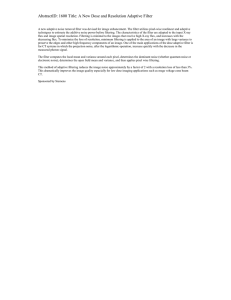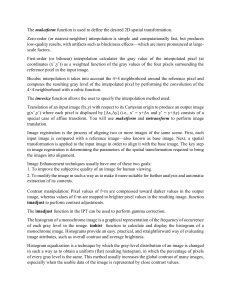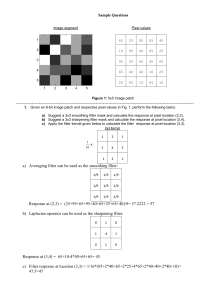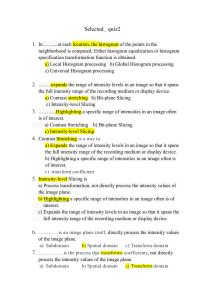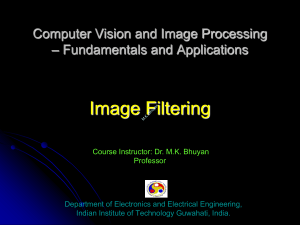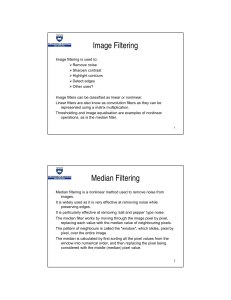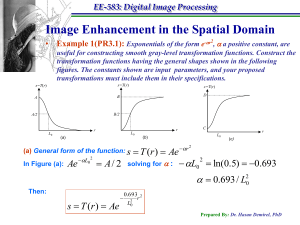Sample Final Exam
advertisement
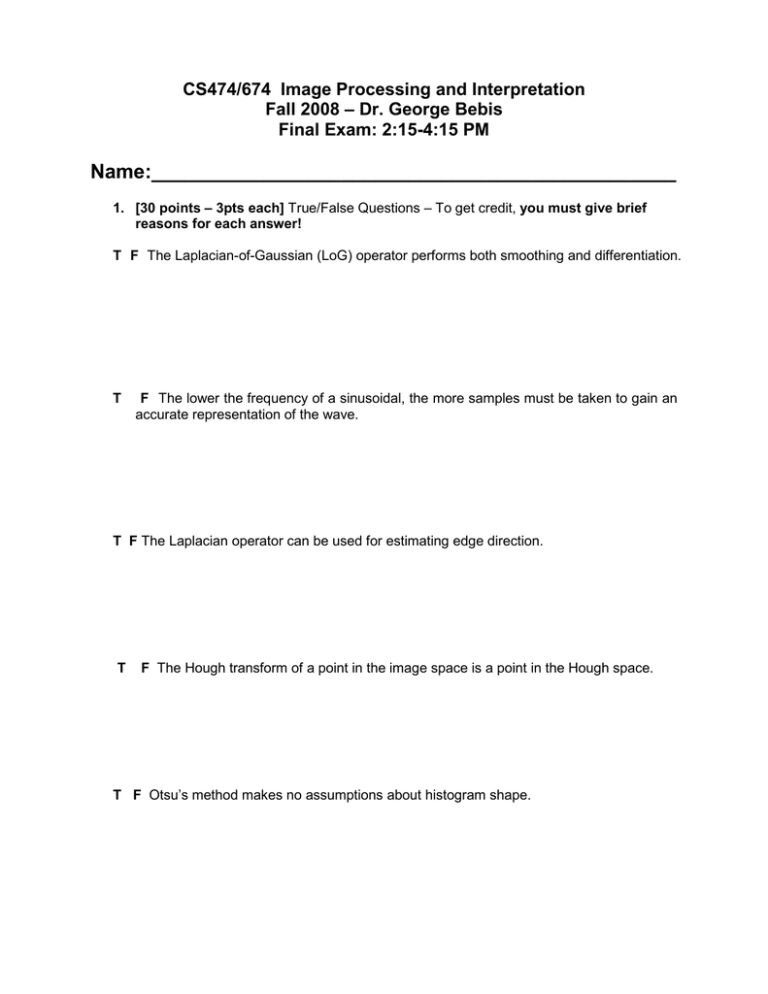
CS474/674 Image Processing and Interpretation Fall 2008 – Dr. George Bebis Final Exam: 2:15-4:15 PM Name:_______________________________________________ 1. [30 points – 3pts each] True/False Questions – To get credit, you must give brief reasons for each answer! T F The Laplacian-of-Gaussian (LoG) operator performs both smoothing and differentiation. T F The lower the frequency of a sinusoidal, the more samples must be taken to gain an accurate representation of the wave. T F The Laplacian operator can be used for estimating edge direction. T F The Hough transform of a point in the image space is a point in the Hough space. T F Otsu’s method makes no assumptions about histogram shape. T F The Nyquist theorem applies to band-limited functions only. T F A gradient magnitude of zero at a given pixel implies that the Laplacian at this pixel is also zero. T F Median filtering is a sharpening filter. T F The magnitude of the FT carries more information than its phase. T F The first step in edge detection is differentiation (i.e., enhancement). 2. [10 points] Assume that an image has the histogram shown below, where p 1 (z) = z/2 corresponds to the intensity of the objects and p 2 (z)=(z-1)/2 corresponds to the intensity of the background. Assuming that P 1 =P 2 =1/2 (where P 1 and P 2 are the a priori probabilities of object and background pixels) find the optimal threshold between object and background pixels. 3. [15 pts] The following image is given: 21 21 21 95 169 243 243 243 21 21 21 95 169 243 243 243 21 21 21 95 169 243 243 243 21 21 21 95 169 243 243 243 (a) Compute its first order entropy. (b) Construct the Huffman code for this image. (c) What is the average number of bits/pixel in this case? Is this a good code? 4. [10 points] Suppose that you process an image with a filter h(i, j). Let us assume that the filter averages the four nearest neighbors of a pixel (i, j), excluding itself. (a) Determine the filter in the frequency domain. (b) Characterize the filter (i.e., determine if it is a lowpass, highpass, or bandpass). Justify your answer. 5. [15 points] JPEG is a popular image compression technique. (a) Describe the steps of the JPEG image compression algorithm. Indicate what kind of redundancy (i.e., coding, interpixel, psychovisual) is addressed by each step. (b) Why using DCT instead of some other transform, for example, DFT? (c) What is the purpose of zig-zag ordering? Which step causes information loss? 6. [10 points] State and prove the convolution theorem in the continuous case. For simplicity, assume 1-D functions. 7. (Undergraduate Students Only) [10 points] When using region merging for segmentation, we need to determine the similarity between pairs of regions. Two methods discussed in class are: (1) hypothesis testing and (ii) weak boundaries. Explain how each of them works. 7. (Graduate Students Only) [10 points] This problem relates to image restoration. (a) Explain how the inverse filtering technique works. (b) What assumptions does inverse filtering make? (c) What is the main issue associated with inverse filtering? How do we deal with it?



